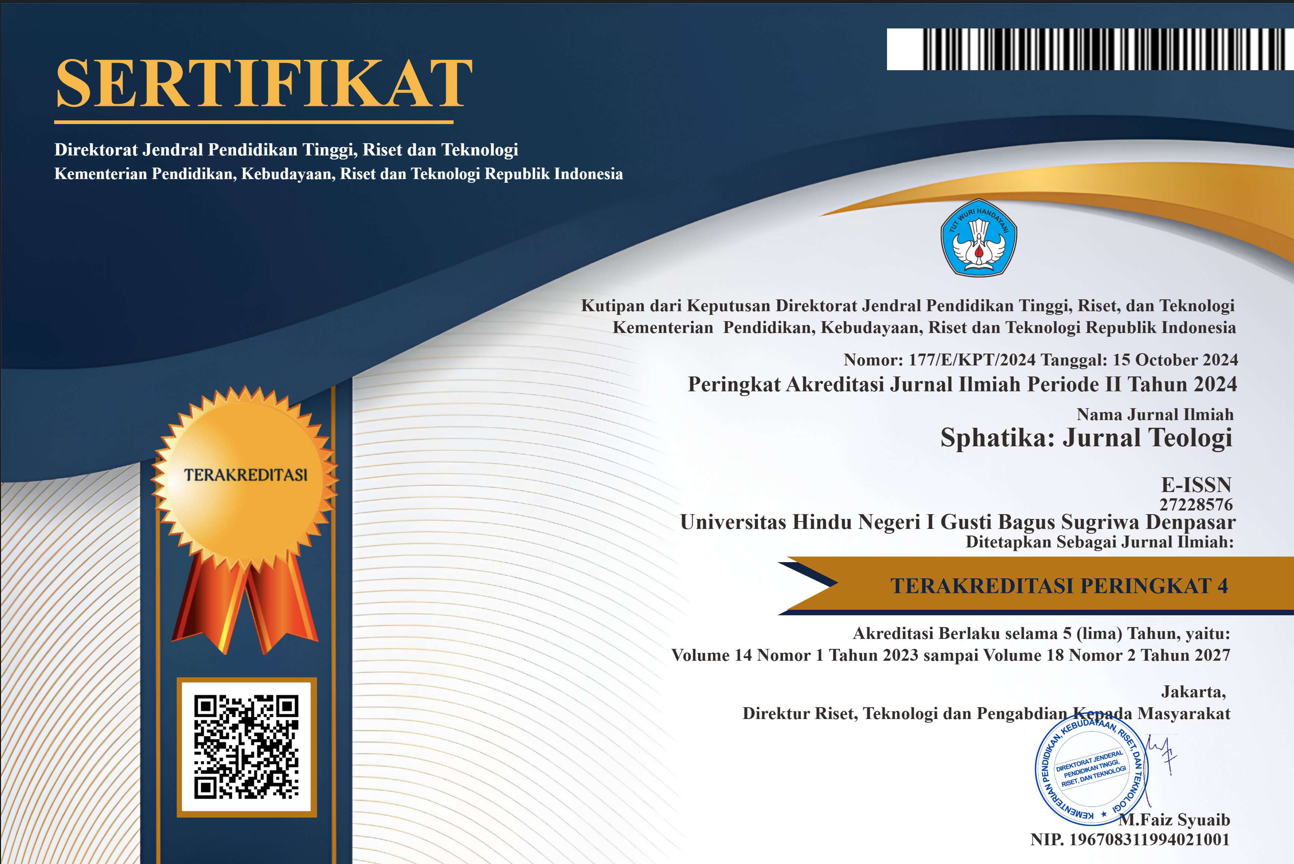Sang Parajnyan dan Sang Pretanjana dalam Tutur Jatiswara
DOI:
https://doi.org/10.25078/sphatika.v11i1.1950Keywords:
The Parajnyan; The Pretanjana; Tutur Jatiswara.Abstract
Humans are God's creations given the ability more than other creatures, humans also live always side by side with good and bad. Therefore humans in living their lives need an awareness of the importance of applying religious teachings in order to minimize all things that are bad, because it will be futile to be born a human being if it does not improve. Very difficult as a human being and very short, so humans must use their lives with good karma for the creation of a peaceful and prosperous life. In his speech, Jatiswara explained that a father gives advice or advice to his children to always be obedient and act well according to the instructions explicitly and implicit in religious literature, also explained about the good man who always prioritizes the dharma in carrying out his life (the Parajnyan) and humans with poor qualities that make adharma as a guide to live their lives (the Pretanjana). This speech explains the various concepts of religious teachings that are very important, one of them is the teachings of karma phala, dharma and religion. Also explained in Tutur Jatiswara about the impact of dharma teachings that do not distinguish humans from social and economic aspects. The method used in this study is a descriptive method that will systematically describe the concepts of good (dharma) and bad (adharma) or the Parajnyan and the Pretanjana in Tutur Jatiswara.
References
Darmayasa. 1992. Canakya Nitisastra.Jakarta: Hanuman Sakti.
Donder, I Ketut. 2007. Kosmologi Hindu Penciptaan, Pemeliharaan, dan Peleburan Serta Penciptaan Kembali Alam Semesta. Surabaya: Paramita.
Sivananda, Sri Swami.2003. Intisari Ajaran Hindu. Surabaya: Paramita.
Sudharta, Tjok Rai.tt. Manava Dharmasastra (Manu Dharmasastra). Surabaya: Paramita.
Sudharta, Tjok.2003. Slokantara Untaian Ajaran Etika, Teks, Terjemahan dan Ulasan. Surabaya: Paramita.
Sudharta, Tjok Rai.2009.Sarasamuscaya Smerti Nusantara.Surabaya: Paramita.
Suraba, I Wayan. 2013. Cara Praktis Untuk Memahami Agama Hindu Melalui Kumpulan Dharmawacana. Surabaya: Paramita.
Suratmini, Ni Wayan.2012. Merawat Diri untuk Menjaga Kesucian Lahir Bathin.Surabaya: Paramita.
Tim Penyusun. 2007. Petunjuk Teknis Pelaksanaan Dharma Wacana. Surabaya: Paramita.
Titib, I Made.1996. Veda Sabda Suci Pedoman Praktis Kehidupan. Surabaya: Paramita.
Wardhana, dkk. (1998). Buku Pelajaran Agama Hindu Tingkat SMU Kelas III. Jakarta: Hanuman Sakti.
Wisasmaya, Ida Komang. 2012. Geguritan Sucita Subudi. Surabaya: Paramita.
Zoetmulder, 1995, Kamus Jawa Kuna-Indonesia. 2 Jilid, Terjemahan Darusuprapta, Sumarti Suprayitna, PT. Gramedia Pustaka Utama, Jakarta.















